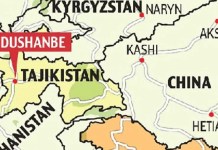Having seen no signs of any breakthroughs between India and China with regard to disengagement of troops in Eastern Ladakh ahead of the 7th round of Commander-level talks, Indian PM Narendra Modi is set to hold talks with Chinese President Xi Jinping next month to consider the mandatory course of action.
Why This Russian Scientist Behind The World’s Most Powerful Atomic Weapon Became A Dissident?
However, while the two leaders are set to interact via video conferencing as part of the BRICS summit on November 14, Beijing, just like New Delhi has continued to heavily fortify its defences with man and machine along the Line of Actual Control (LAC) in Ladakh region ahead of punishing winters.
Earlier, while holding a real combat exercise close to the Indian border in the mountainous terrain of Ladakh, the People’s Liberation Army had finished the first heavy equipment drop from the giant Xi’an Y-20 military transport aircraft.
According to earlier reports by China Military on August 26th, multiples pieces of heavy equipment which included 107mm multi-barrel rocket launchers (MBRLs), Type-03 crawler-type paratrooper vehicles and armoured vehicles were airdropped by the Y-20 aircraft which has a maximum take-off weight of 200 tons.

The PLA claim that the MRBLs are renowned for being lightweight and for boasting strong firepower, with a maximum range of 8 kilometres. The rocket launchers are set to be one of the major supporting weapons for rapid response forces which include the airborne troops.
The move is seen as a sign of maintaining combat effectiveness for the airborne troops, with the heavy equipment and weapons considered a key factor to test the Chinese military’s airborne combat capabilities.
Germany Unveils New Armoured Vehicle Which Is Fast, Furious, Hybrid & Silent
Due to the ever-growing impact of the airflow at such an altitude and the tough terrain of the region, it becomes increasingly difficult to carry out an accurate airdrop of the hefty equipment.
“To accurately deliver materials and equipment to a destination from an altitude of hundreds of meters or even higher, the aircraft and the personnel involved must be fully equipped and highly skilled.
Airdrop is a highly sophisticated technical system of an intensive quantity of technologies, including loading and unloading systems onboard, parachute systems, buffer systems, etc., as well as the airdrop equipment itself.” said PLA Air Force expert Fu Qianshao.
After Hypersonic Missile, Indian DRDO Tests Another ‘SMART’ Weapon
The recent developments in the region could also be attributed as a retaliatory move to the Indian defence forces stocking up massive supplies of ration, weapons and winter clothing as well as the deployment of tanks in Depsang and other sectors of the region.
Last week, PM Modi along with a list of top Indian officials inaugurated the Atal Tunnel which connects the Manali region of the country to Ladakh.
The 9.02 kilometre-long tunnel is expected to provide a “new strength” to the country’s border infrastructure and will aid New Delhi to rapidly deploy its troops along the volatile LAC with the transportation of military equipment and other essential supplies being made possible due to the tunnel as well.
However, according to Global Times, a daily newspaper under the auspices of Chinese Communist Party (CCP), the tunnel will have no standing if a war ensues between the two nations with the PLA nullifying its usage.
“The tunnel will be of great help to Indian troops and their provision of supplies in peacetime; however, it has no benefit in wartime, especially if a military conflict breaks out. The Chinese People’s Liberation Army has means to make this tunnel unserviceable,” said Song Zhongping, while writing an editorial for the Global Times.
Song also warned India to refrain from provoking China into a conflict due to the significant gap between the combat capabilities of the two nations.
“India should restrain itself and refrain from provocation as no passage exists that can enhance India’s combat capability. After all, there is a certain gap in combat effectiveness between China and India, especially in terms of India’s systematic combat capability. India is far from reaching China’s level.”
While the situation at the border continues to remain tense despite the five-point consensus reached between the top diplomats of the two nations, the next commander level talks will be held on October 12.




